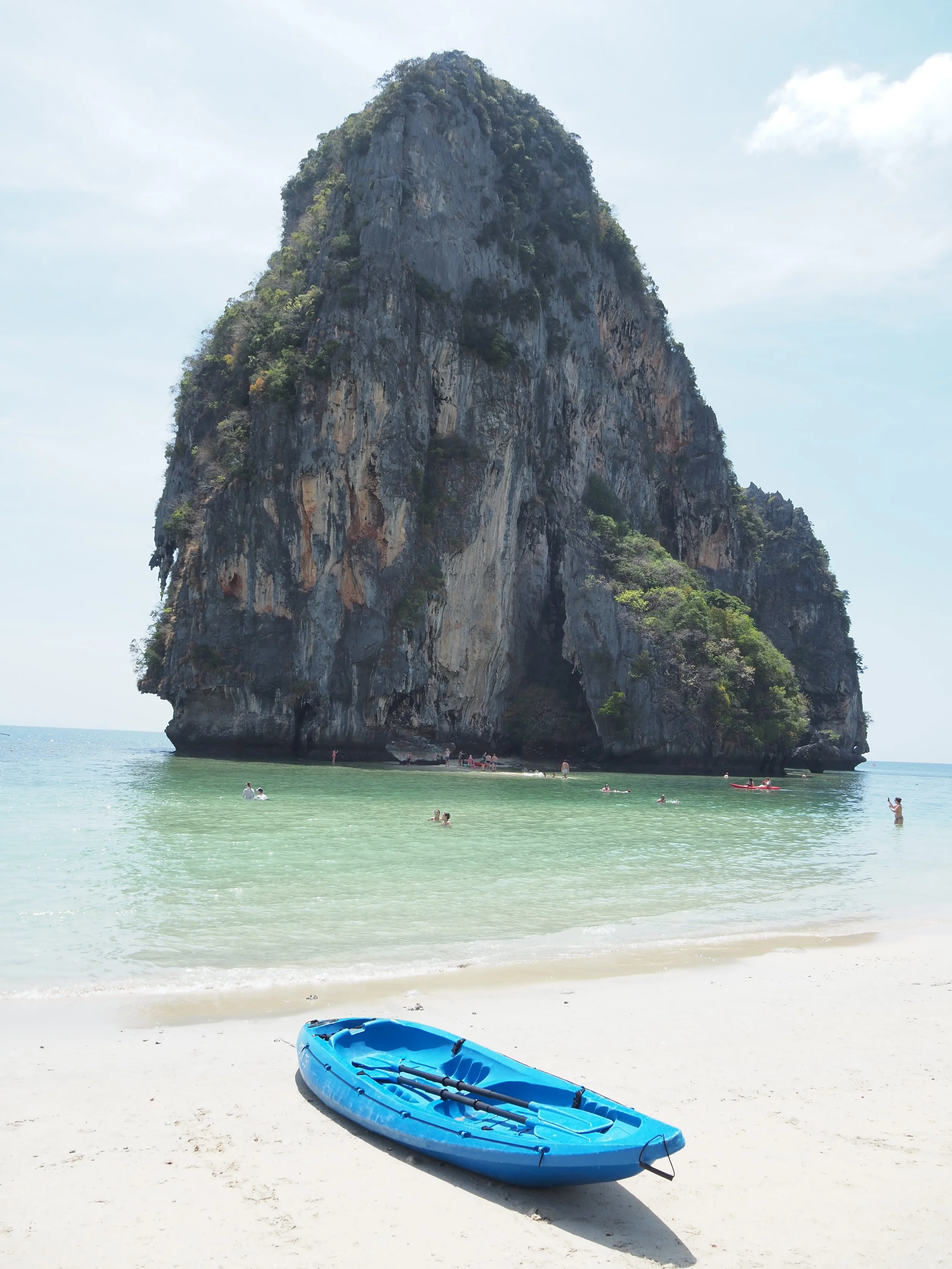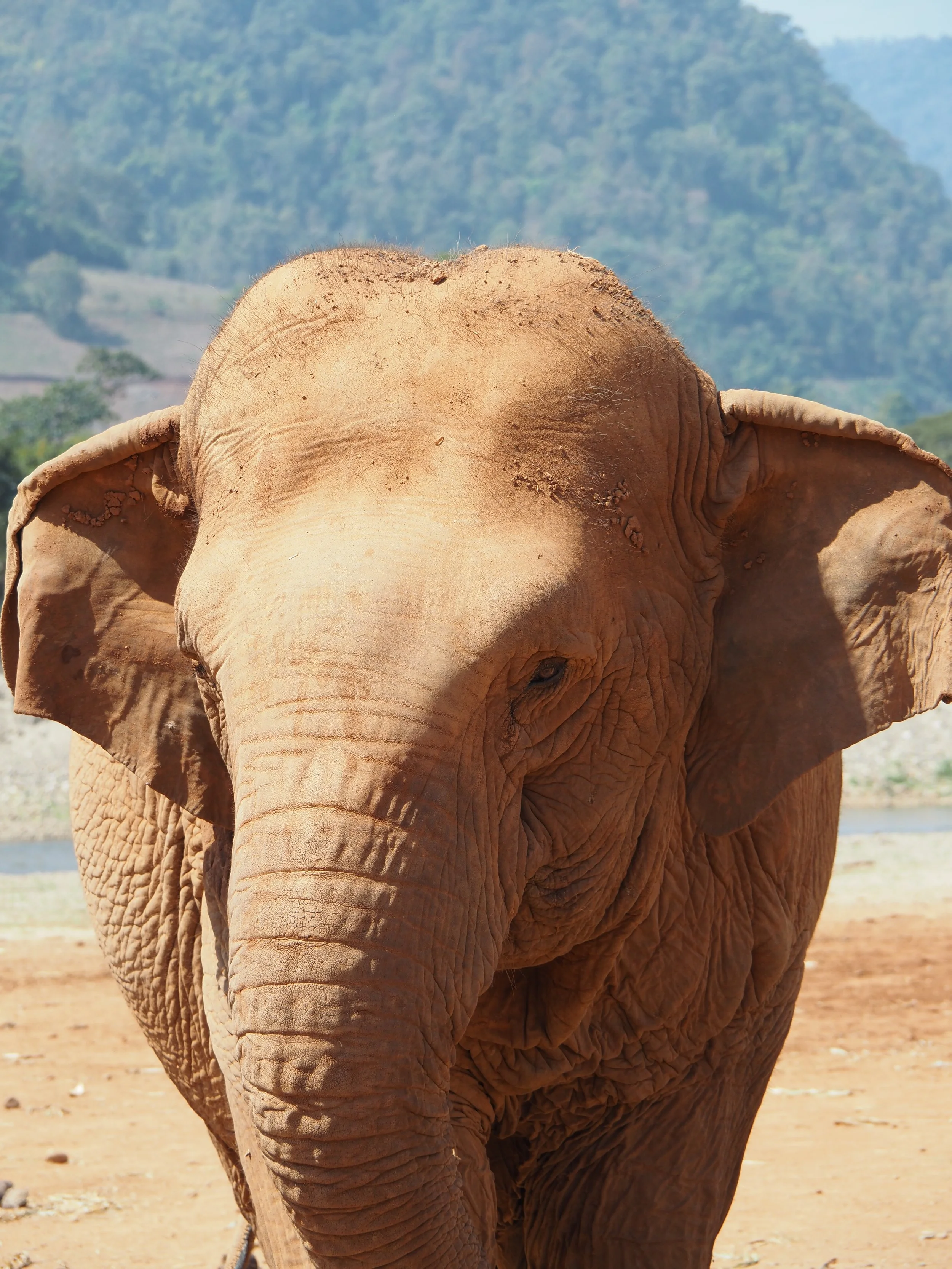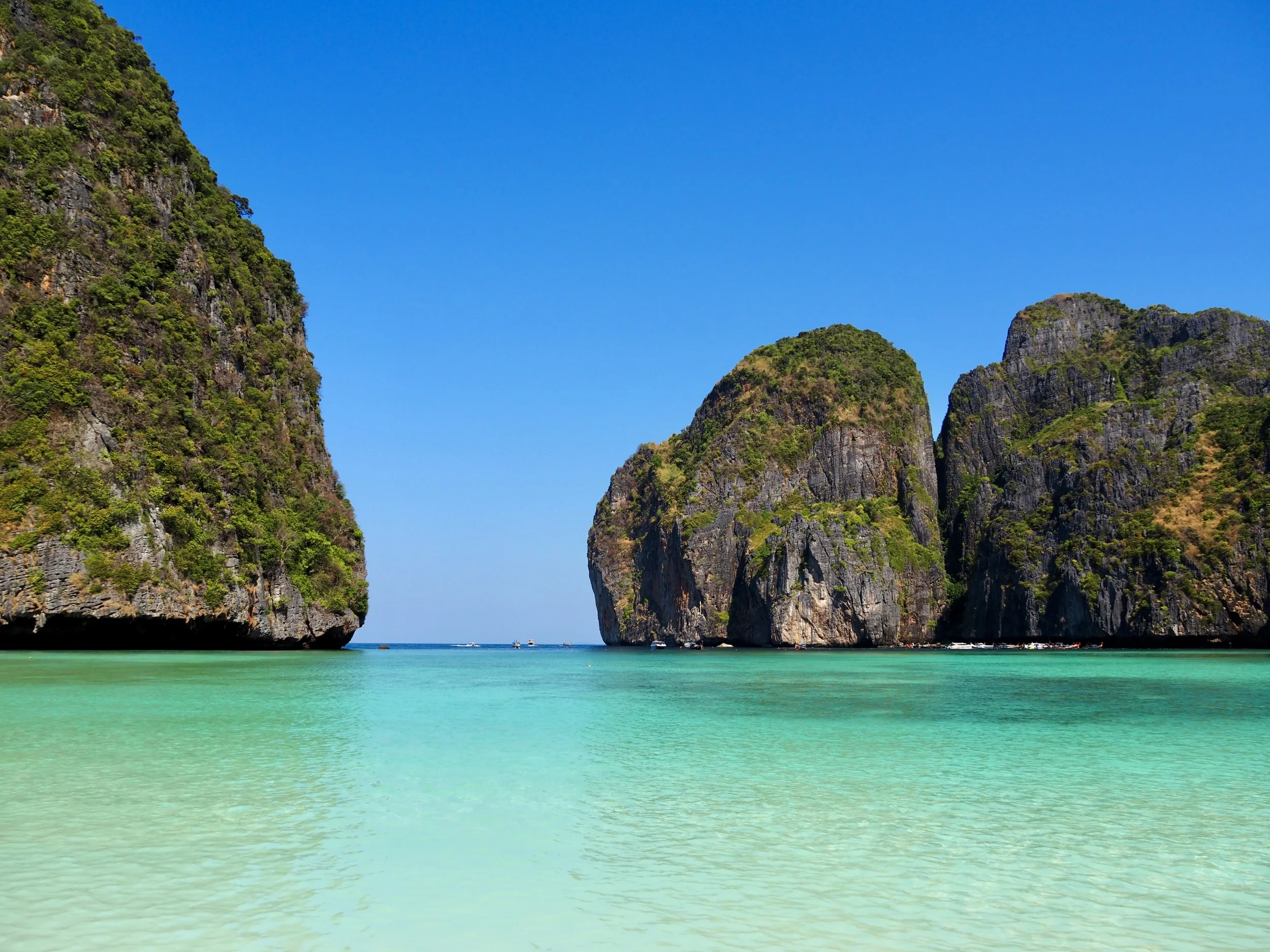
Thailand
Thailand
There are plenty of reasons why people travel halfway around the world to Thailand. Despite flight times that span an entire day, tourists continually flock to the country’s spectacular beaches, bustling cities, ornate temples, elephant sanctuaries, and renowned restaurant and market scene. An established tourism circuit and affordable prices are just two reasons why you should add this Southeast Asian hub to your bucket list. A two-week trip was sufficient to visit the major sights in Bangkok, Chiang Mai, and Krabi, though visitors can spend months in this country and still find new regions to explore.
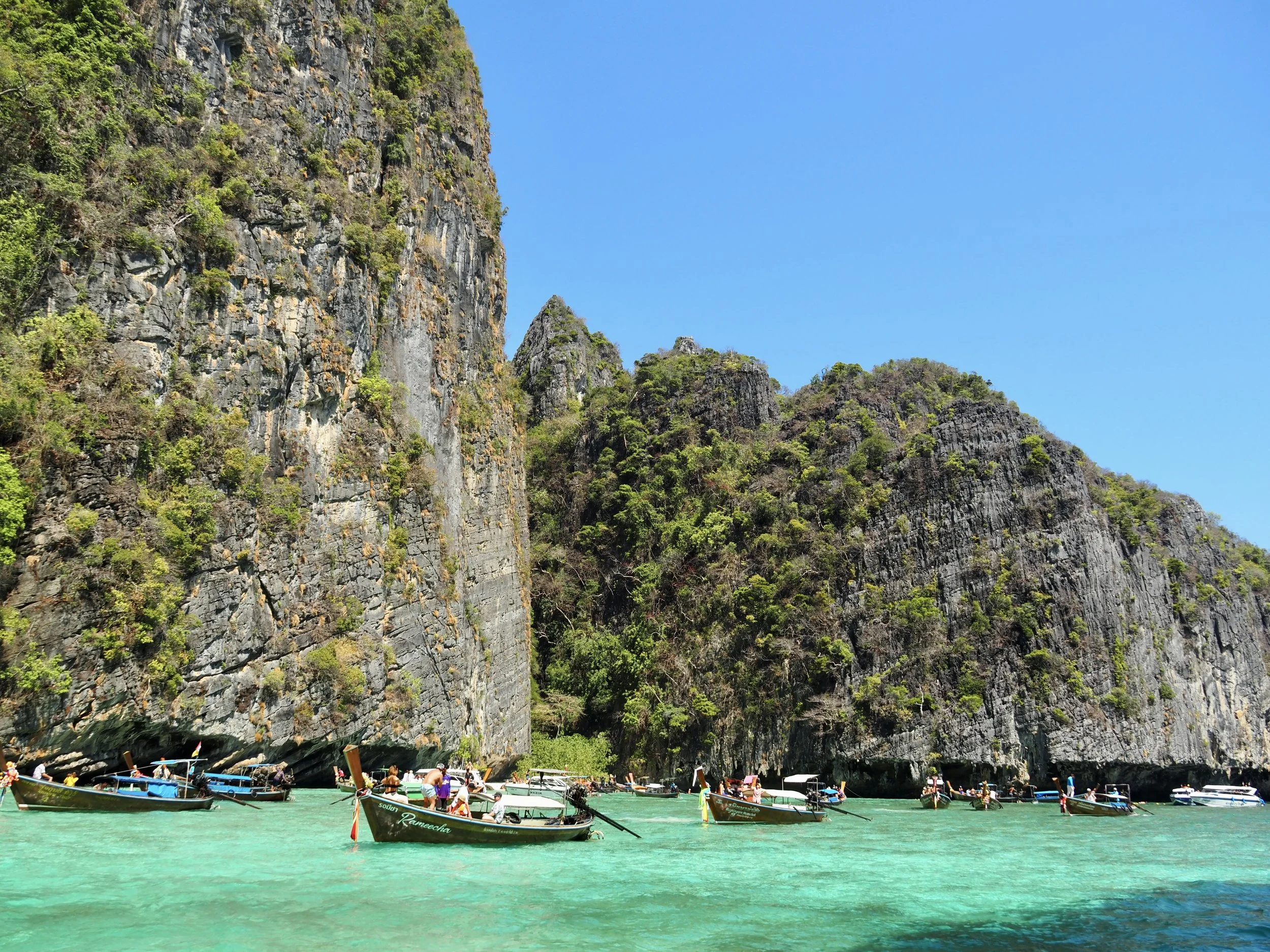
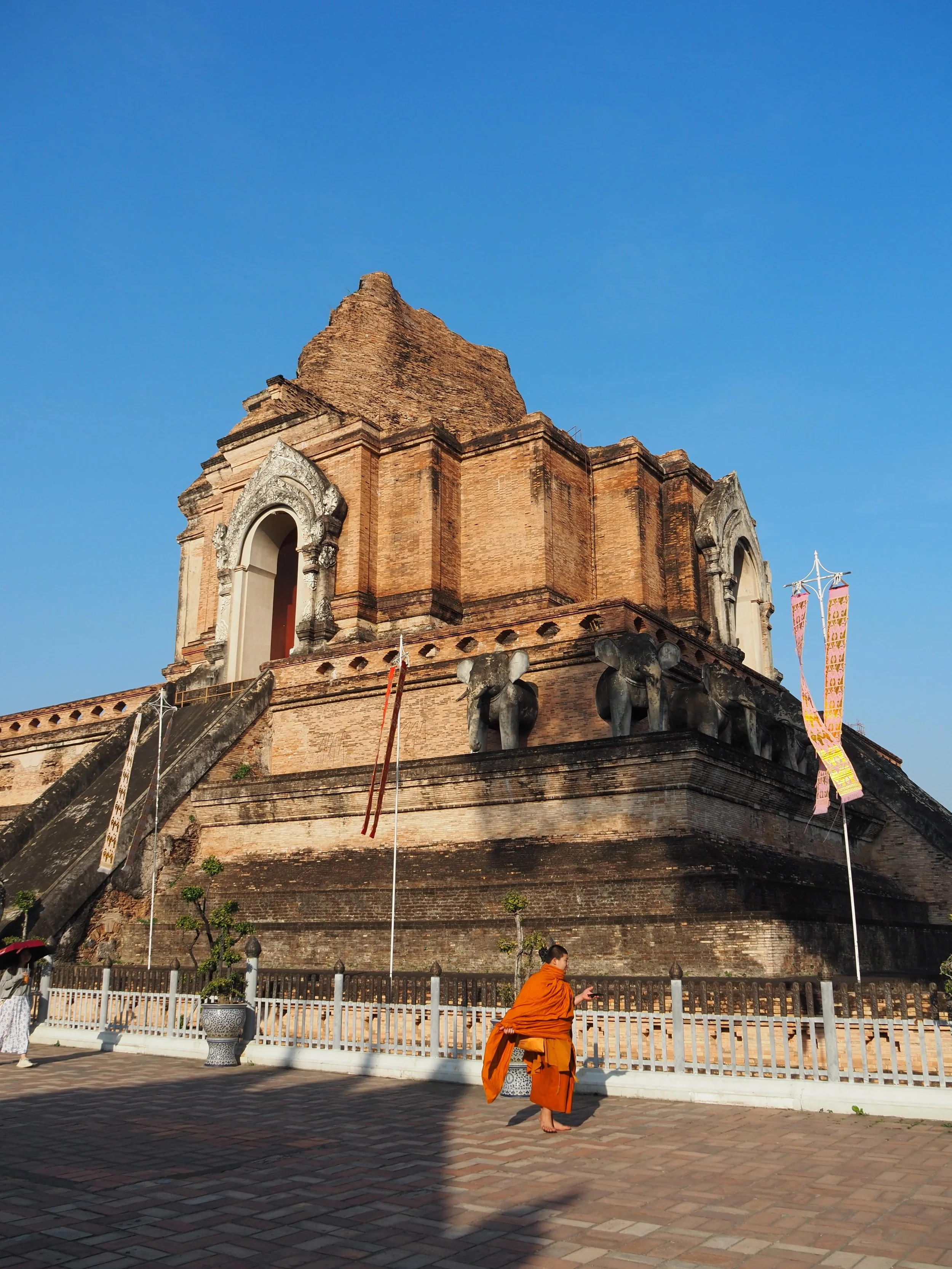
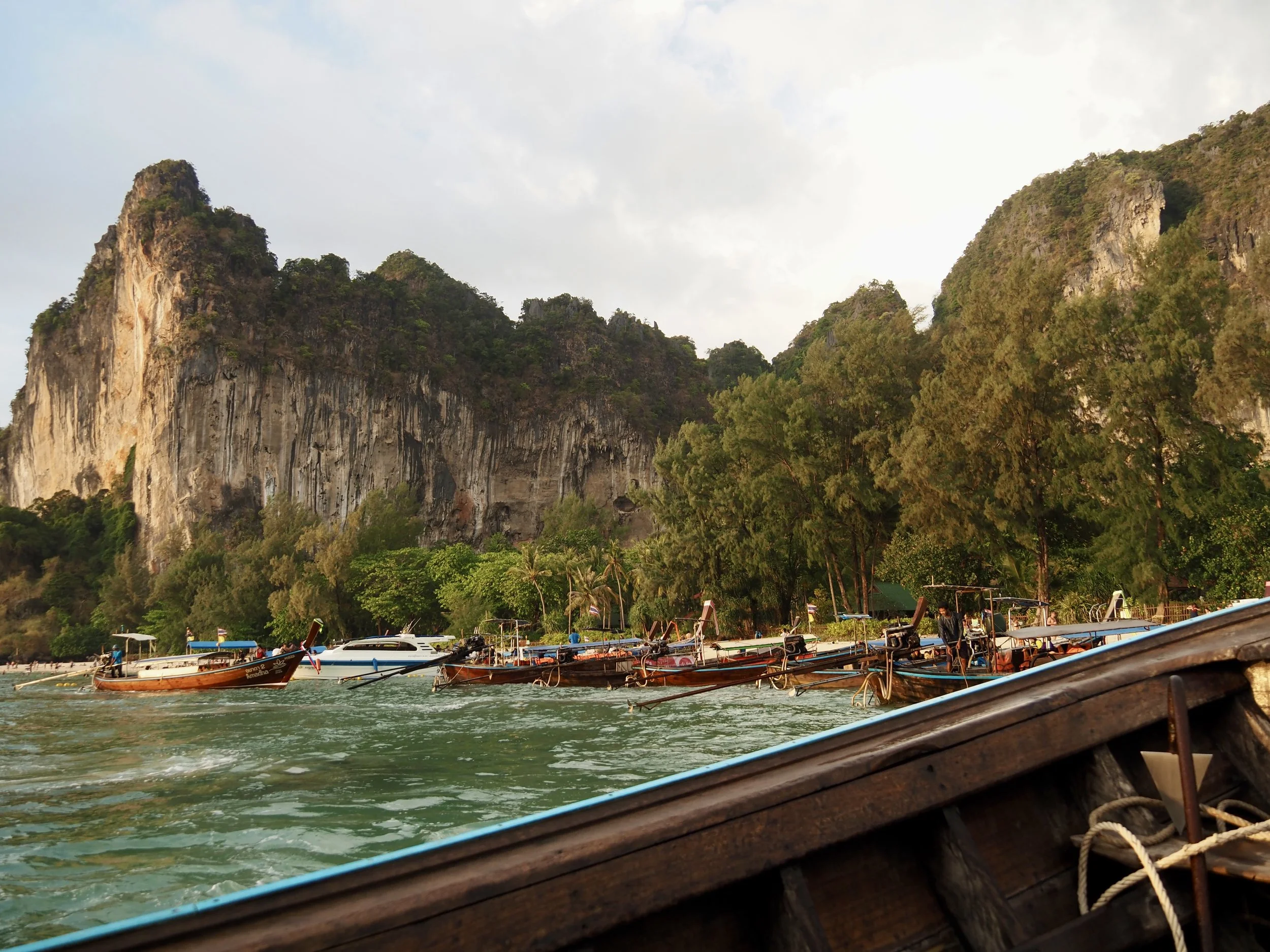


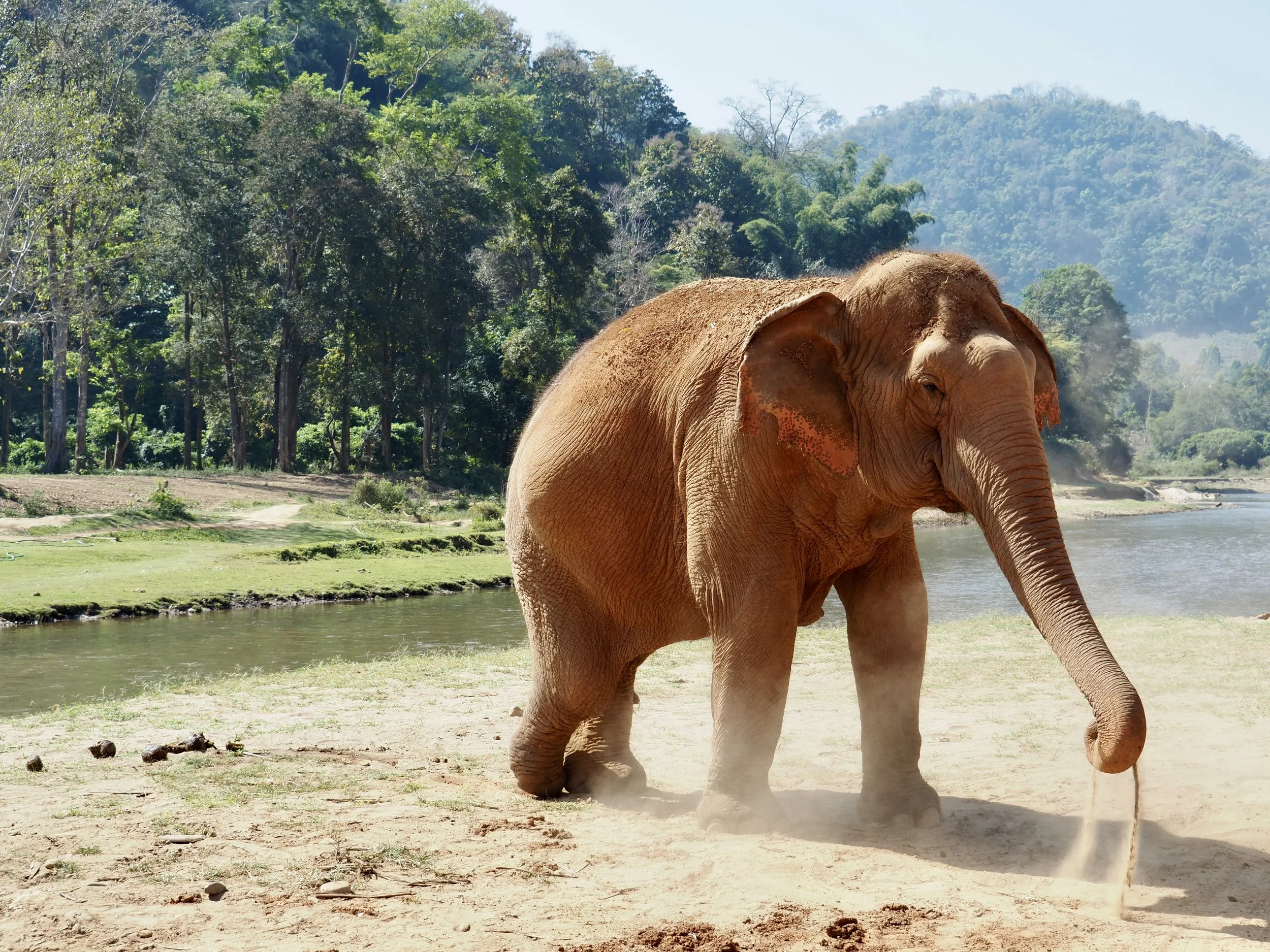
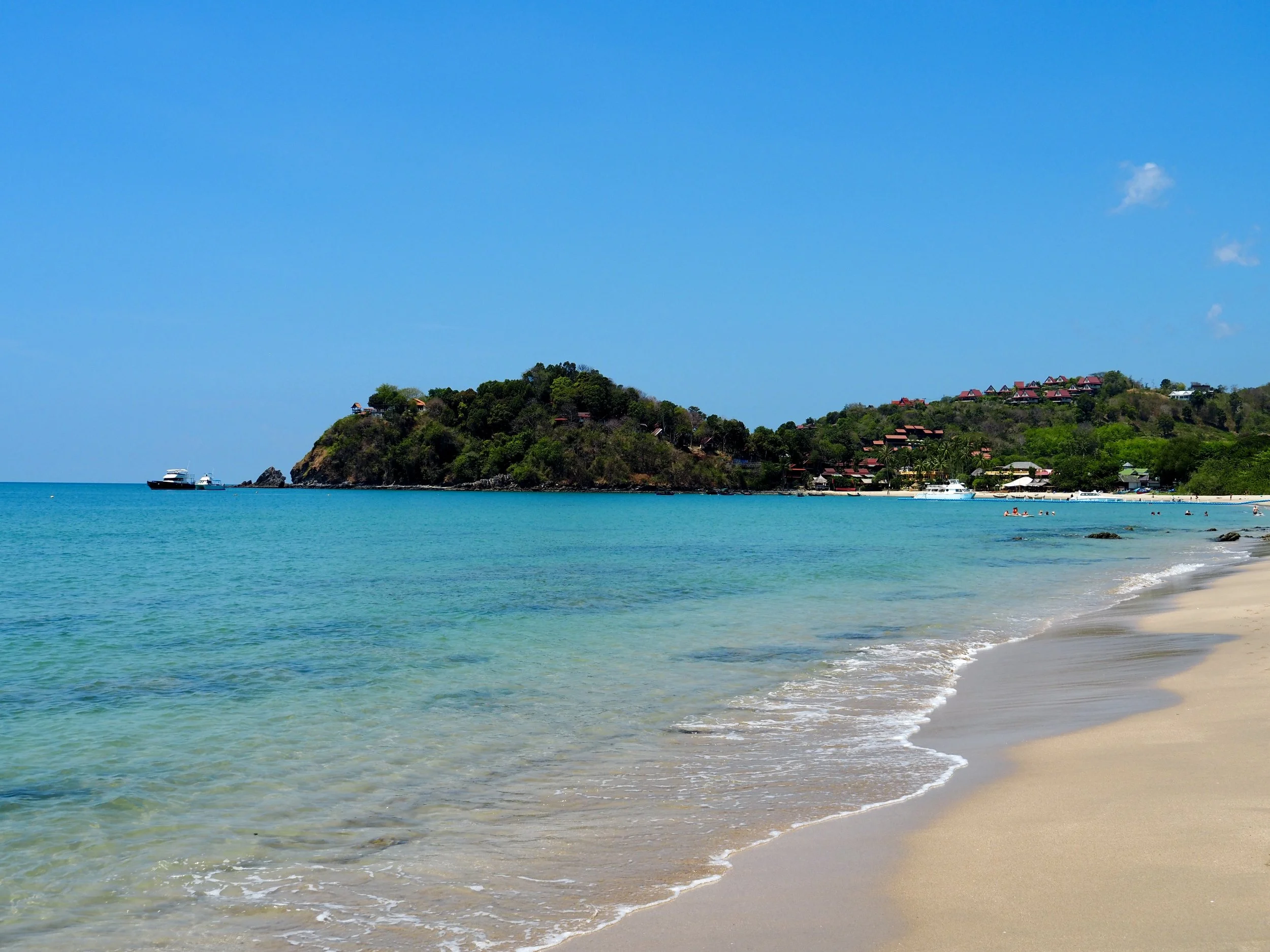

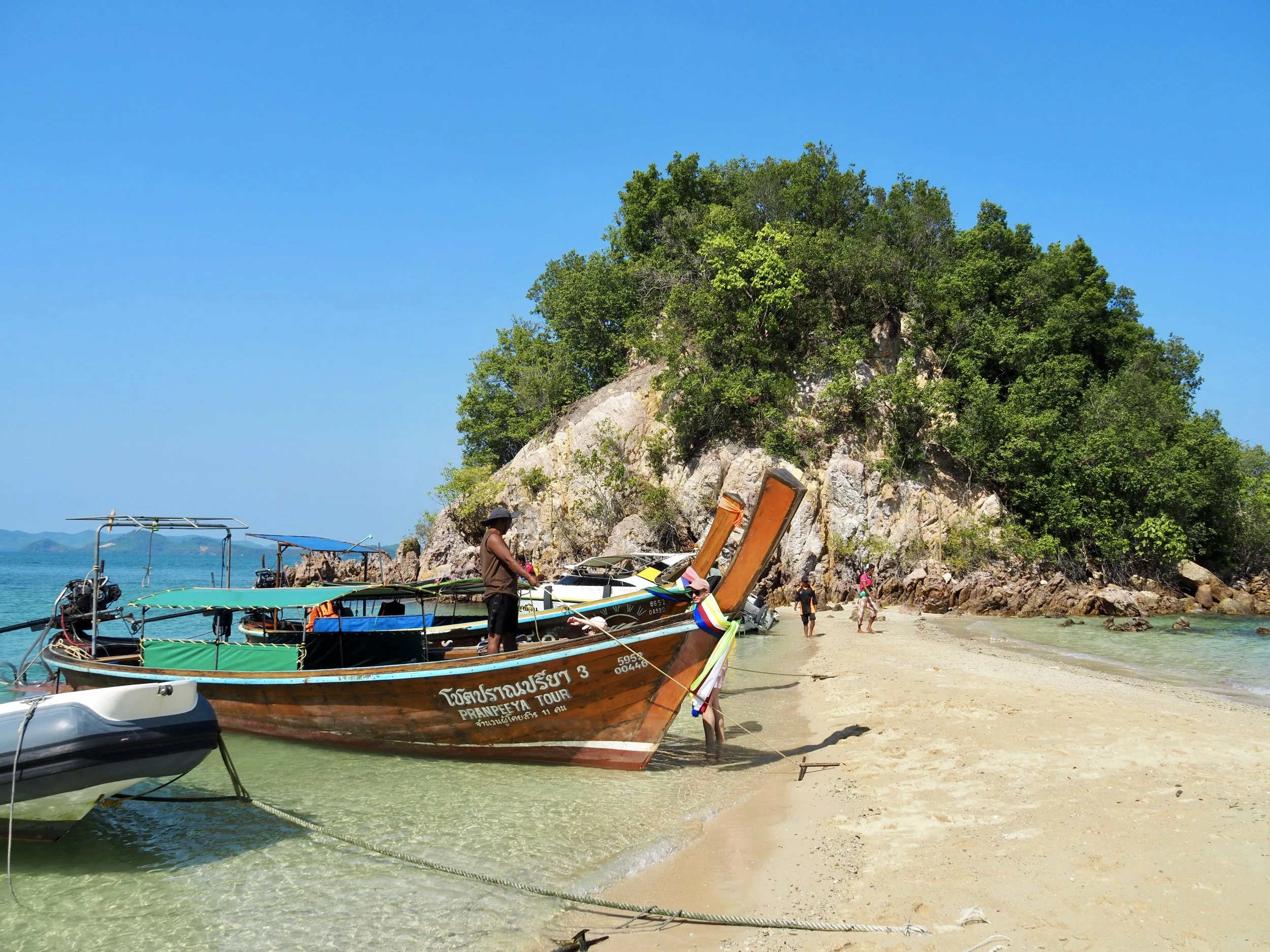
Thailand Highlight #1
Explore the beaches and islands of southern Thailand
There are many options when it comes to visiting the southern beaches of Thailand. While Phuket is known as a party hub, Krabi has its own nightlife scene, but pairs it with immaculate beaches, easy access to incredible day trips, and a downtown strip that mixes a lively bar scene with family-friendly restaurants. I stayed in Ao Nang, a beach town 45 minutes from the Krabi airport. From our hotel base, we were able to take a 15-minute longtail boat to the world-famous Railay Beach, we booked an Airbnb Experience tour to the Phi Phi Islands, and we chartered our own boat to explore Koh Hong. We also arranged for a 1-night, 2-day trip to Koh Lanta, further down the southern coast of Thailand.
Each beach offers its own benefits—Phi Phi is home to some of the most spectacular blue-green water you will ever see, but as a result, it’s entirely filled with tourists and you’ll be lucky to snap a photo without a crowd of people behind you. Koh Lanta is a trek from Krabi or Phuket, making it nearly impossible to visit without booking at least one night in a hotel. Your reward will be miles of unspoiled beaches with very few fellow tourists. Railay Beach, a stretch of beach directly adjacent to Ao Nang but only accessible by boat, also offers spectacular views and a crowd that is mostly confined to day-trippers (though both luxury accommodation and hostels are available if you choose Railay as your home base). Koh Hong is only open for day-trippers, with a strict “leave nothing behind” policy—you’re able to purchase snacks on the island, but all trash must be taken with you. Koh Hong features a spectacular viewpoint, with a steep climb of 400+ metal steps, but the surrounding views are well-worth the trek.

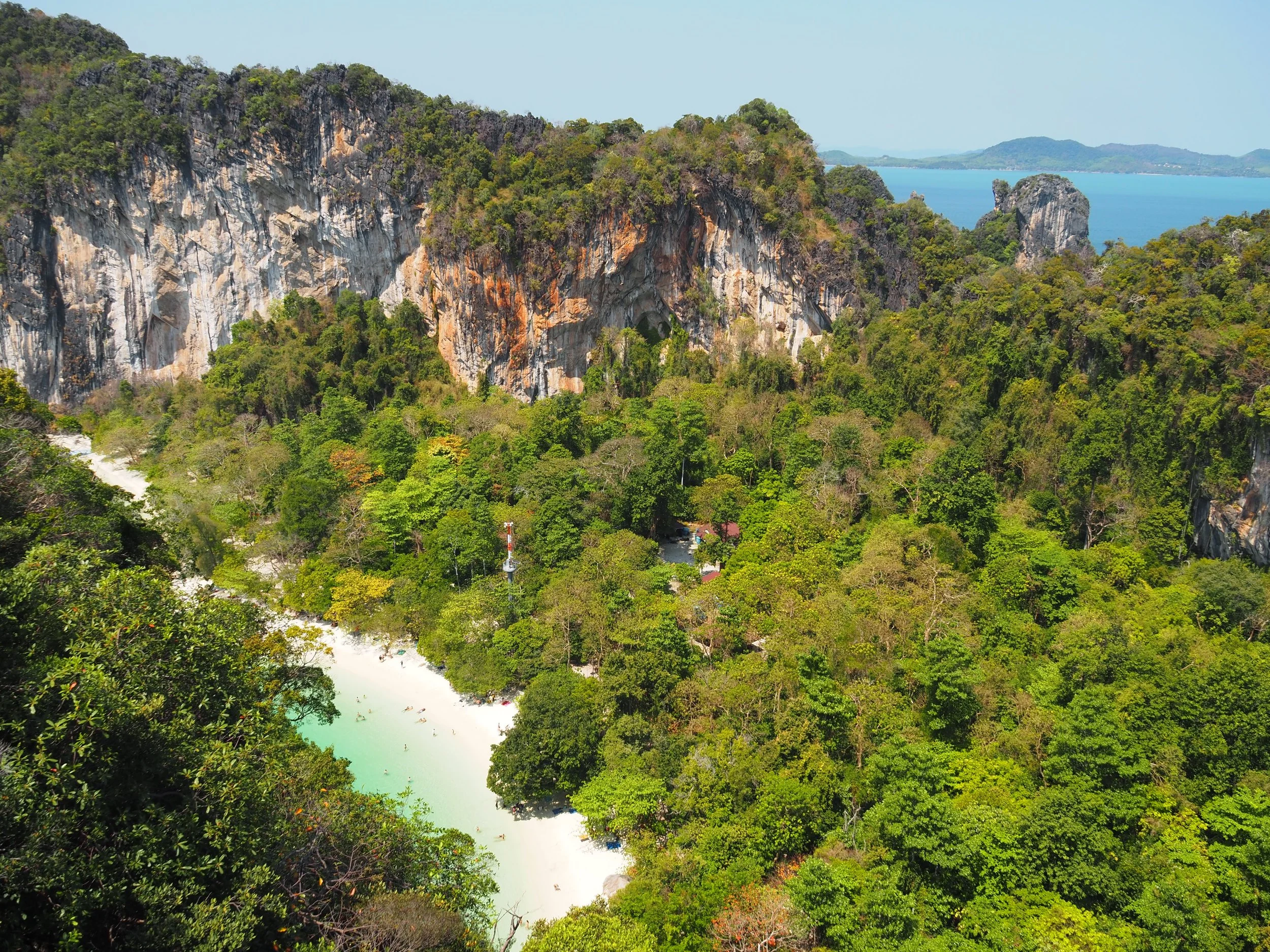
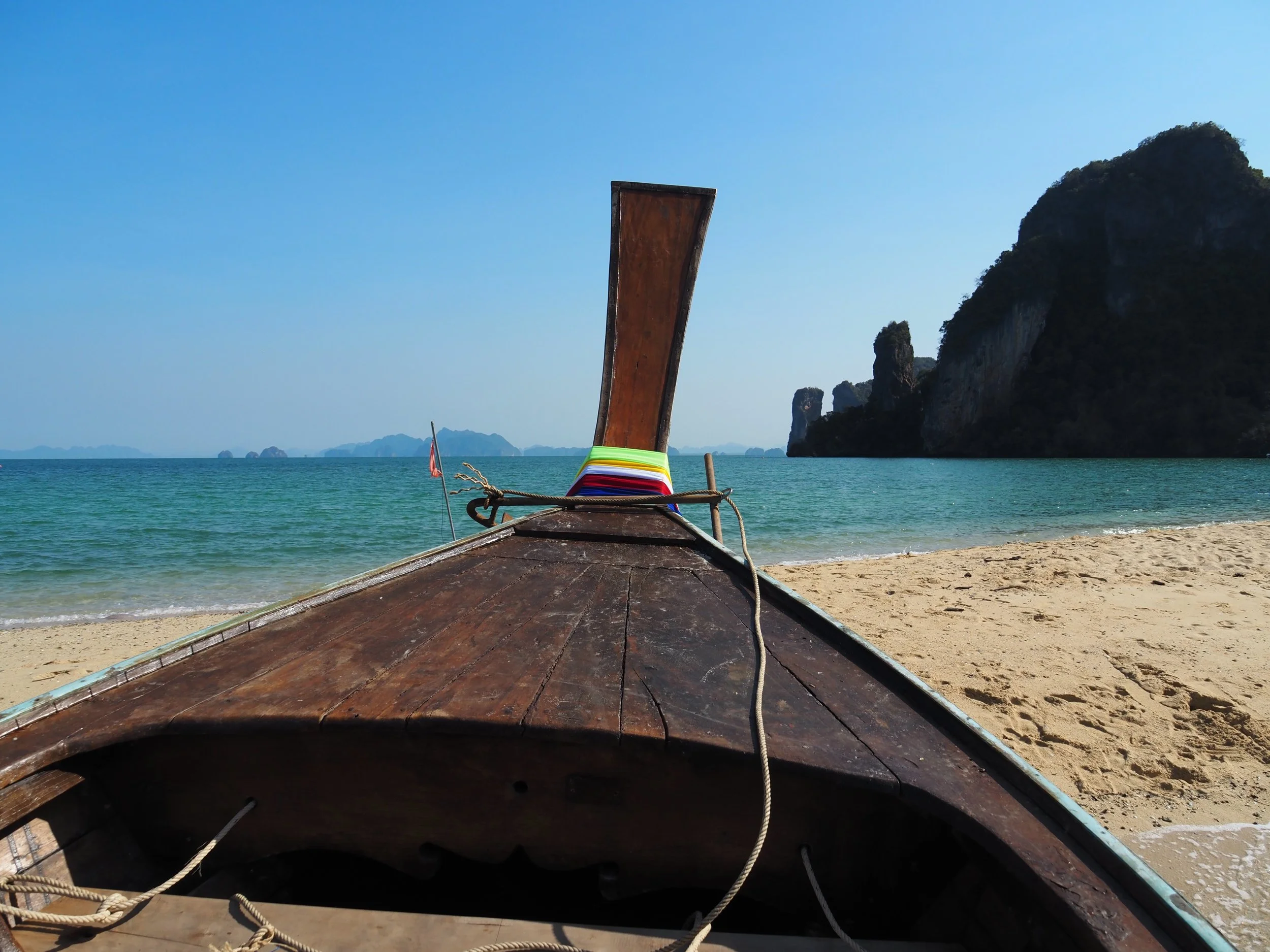

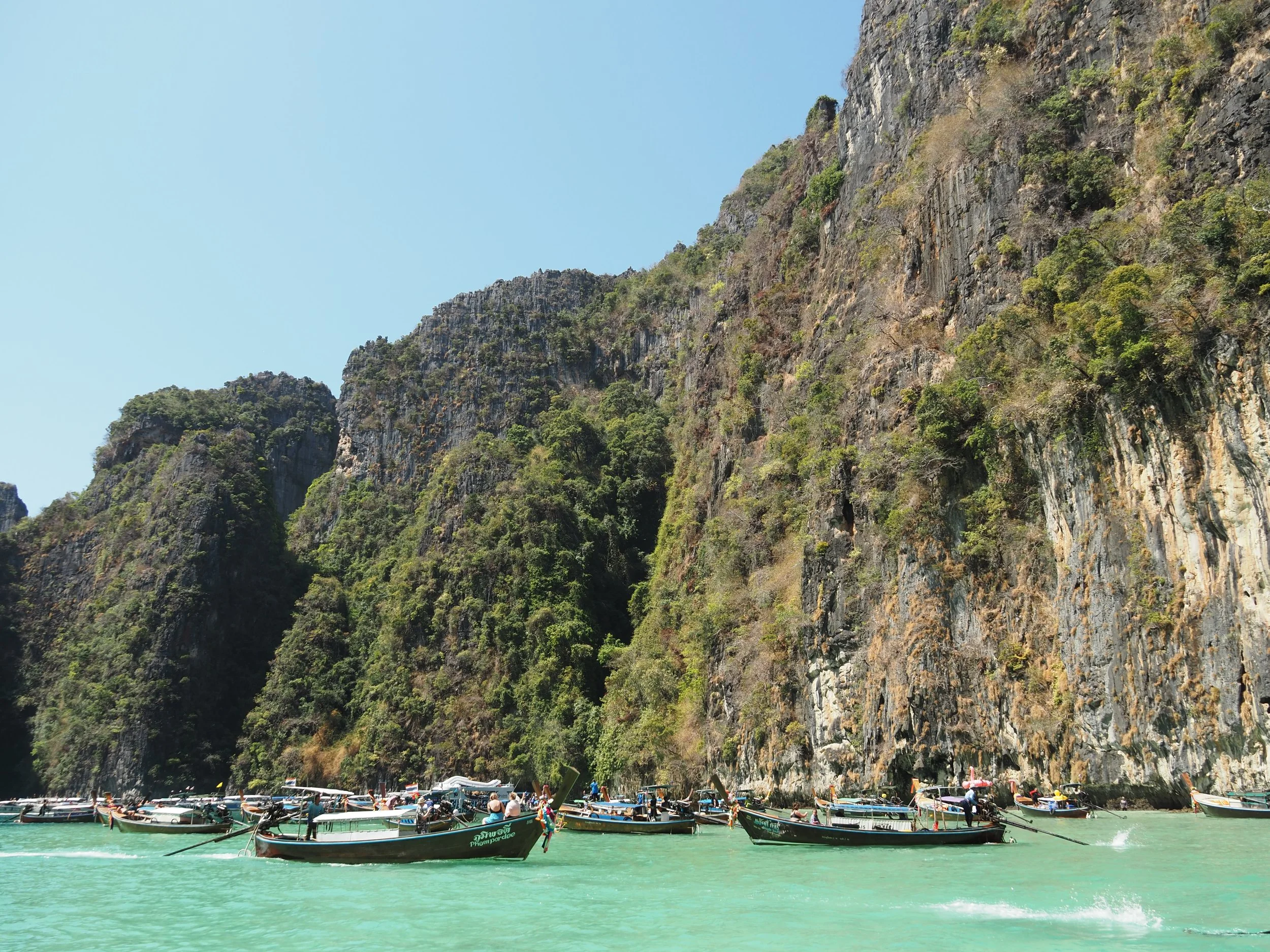
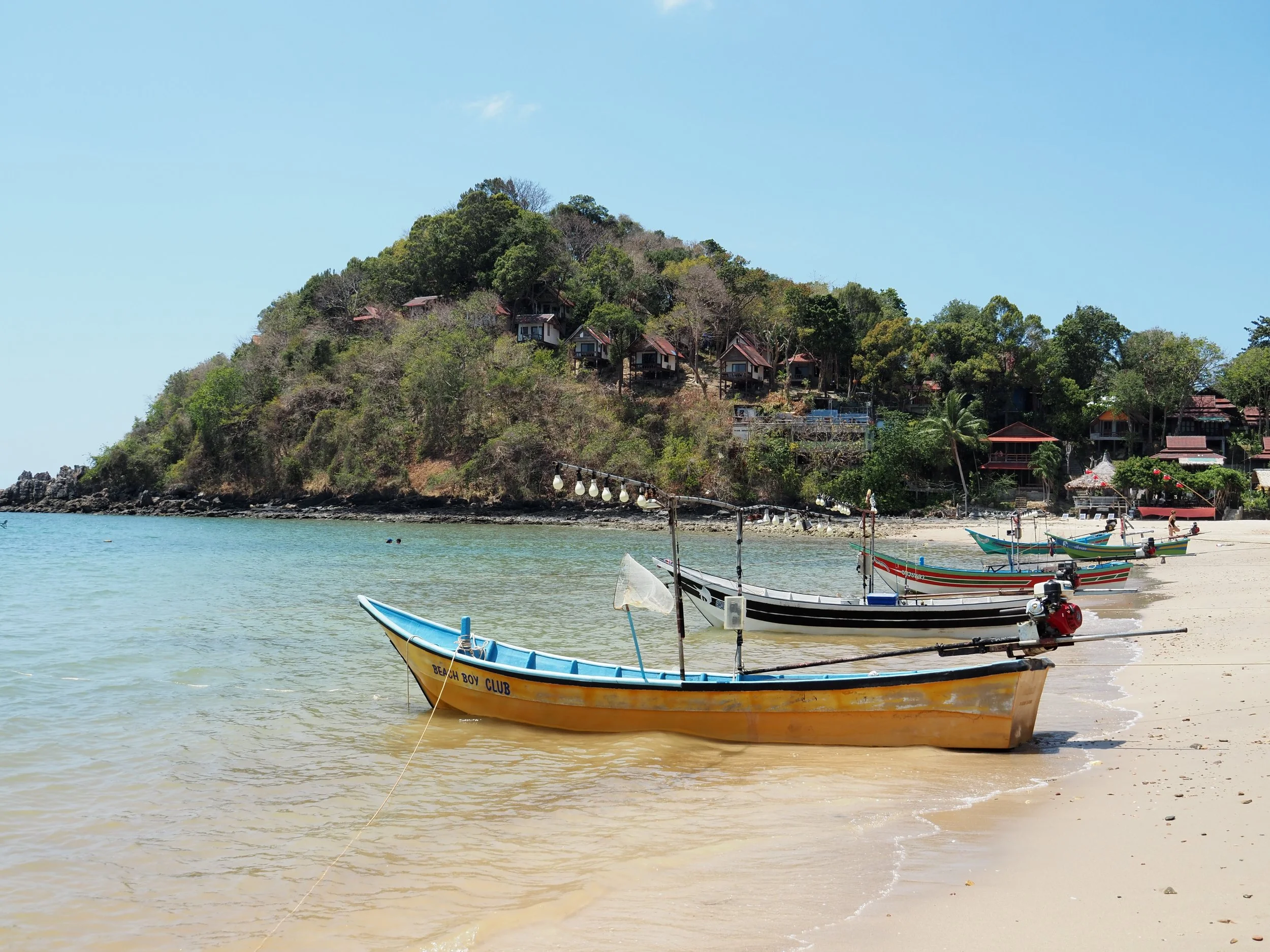


Thailand Highlight #2
Explore Thailand’s rich market culture
Bangkok, Chiang Mai, and Krabi are home to some of Thailand’s best—and most scenic—markets. We booked an Airbnb Experience tour that took us outside Bangkok for a day of exploration. Maeklong Railway market is the Instagram-famous market where local vendors quickly disassemble their stalls to make way for a train that expertly maneuvers through the narrow alley. Our second stop was Damnoen Saduak floating market, a series of canals that features various vendors in longtail boats. Vendors offer mango sticky rice, an assortment of drinks, souvenirs, and even grilled meats as you journey through the canals on your own longtail boat.
We also visited Asiatique The Riverfront in central Bangkok. This open-air market features hundreds of stalls and a Ferris wheel. We purchased Nutella roti and smoothies to wander the expansive riverfront property.
Chiang Mai is another city known for their night market. While their Sunday market within the walled city center is particularly renowned, the city also hosts dozens of stalls in a permanent location just a short walk from the historic center. The Chiang Mai Night Bazaar is home to a number of bars, food stalls, souvenir sellers, and even Muay Thai fights. You’ll find everything from fried scorpions and banana bread to elephant pants and elaborately carved bars of soap while enjoying live music and a lively market scene night after night.
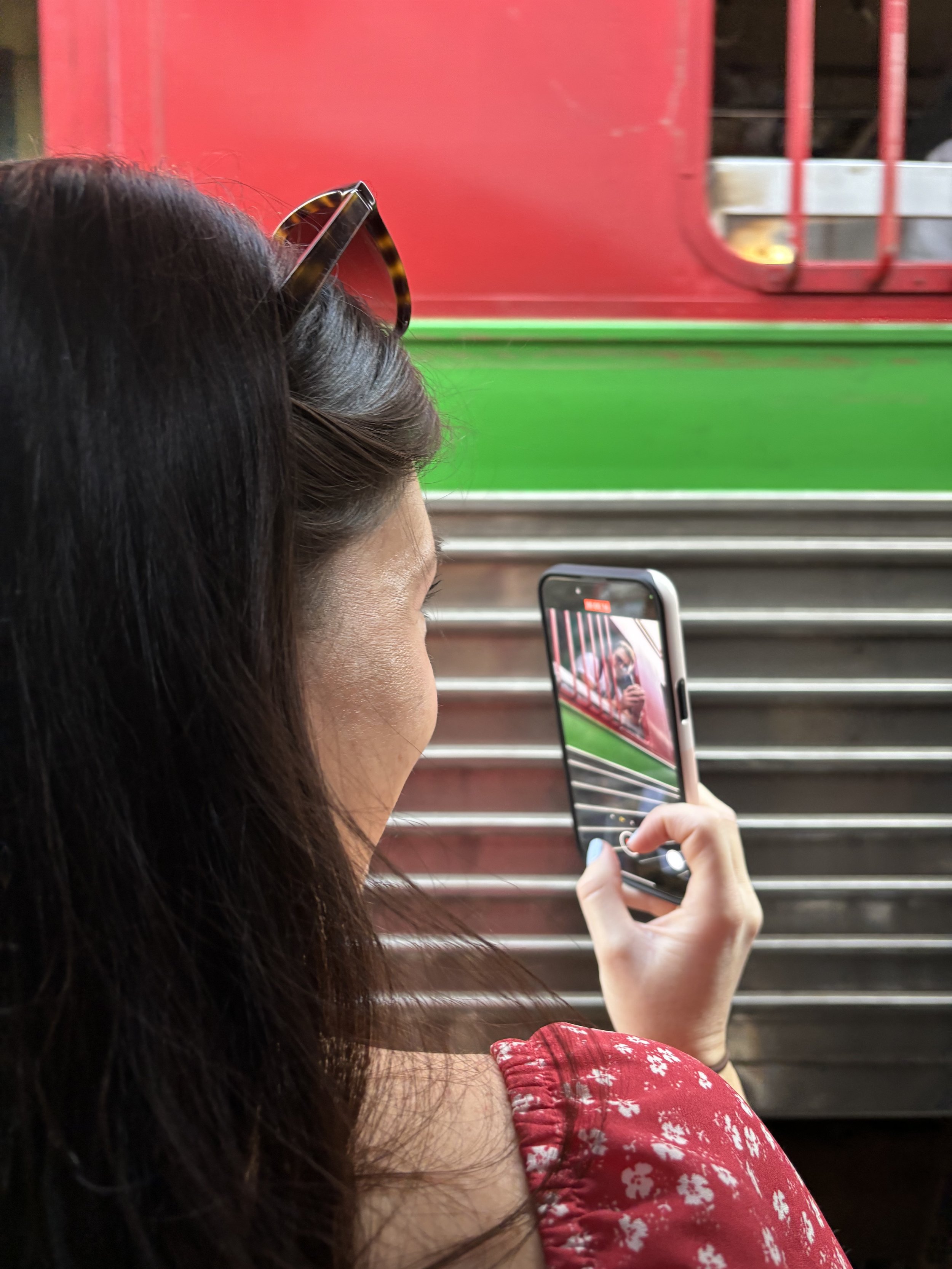
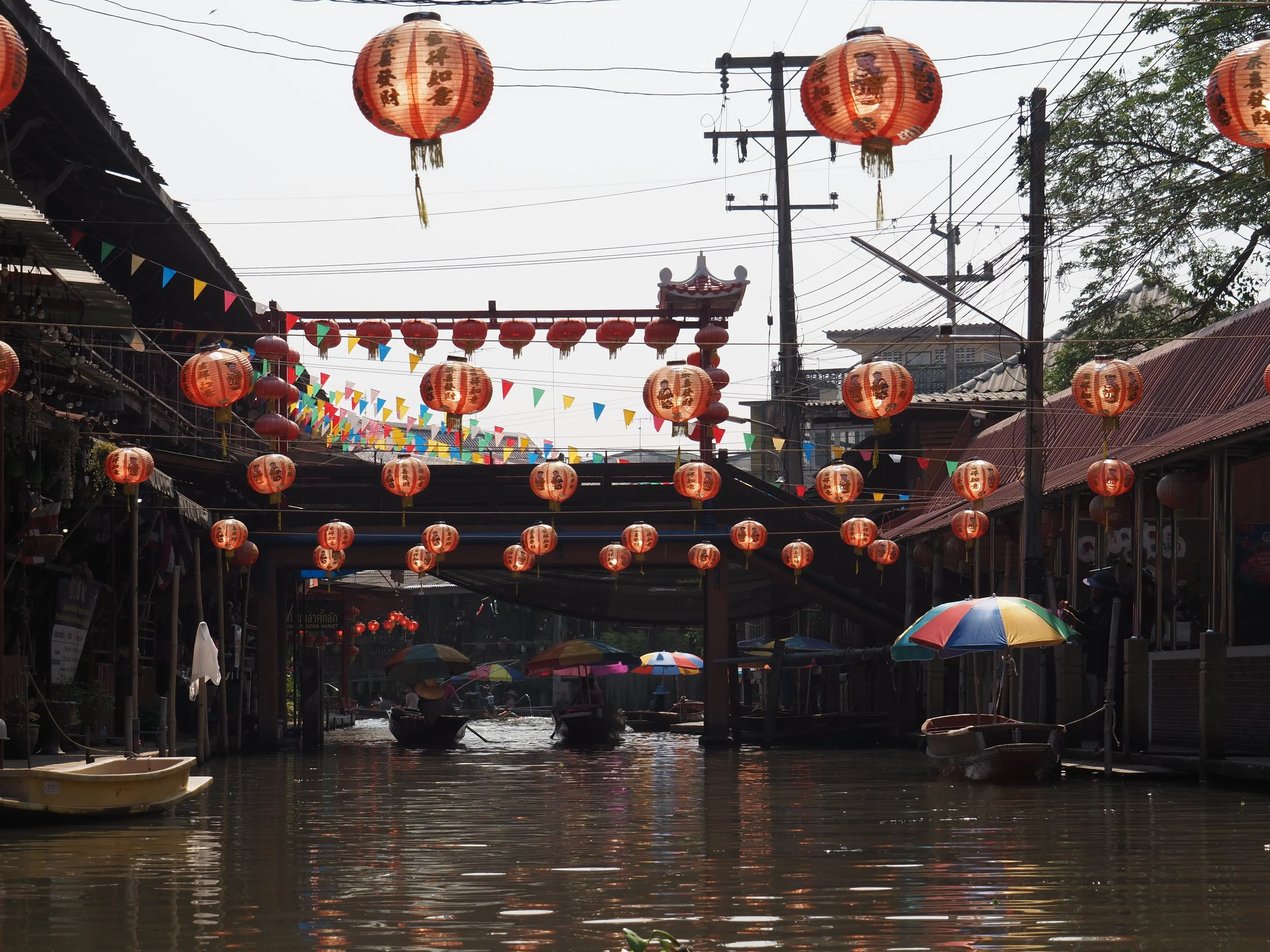
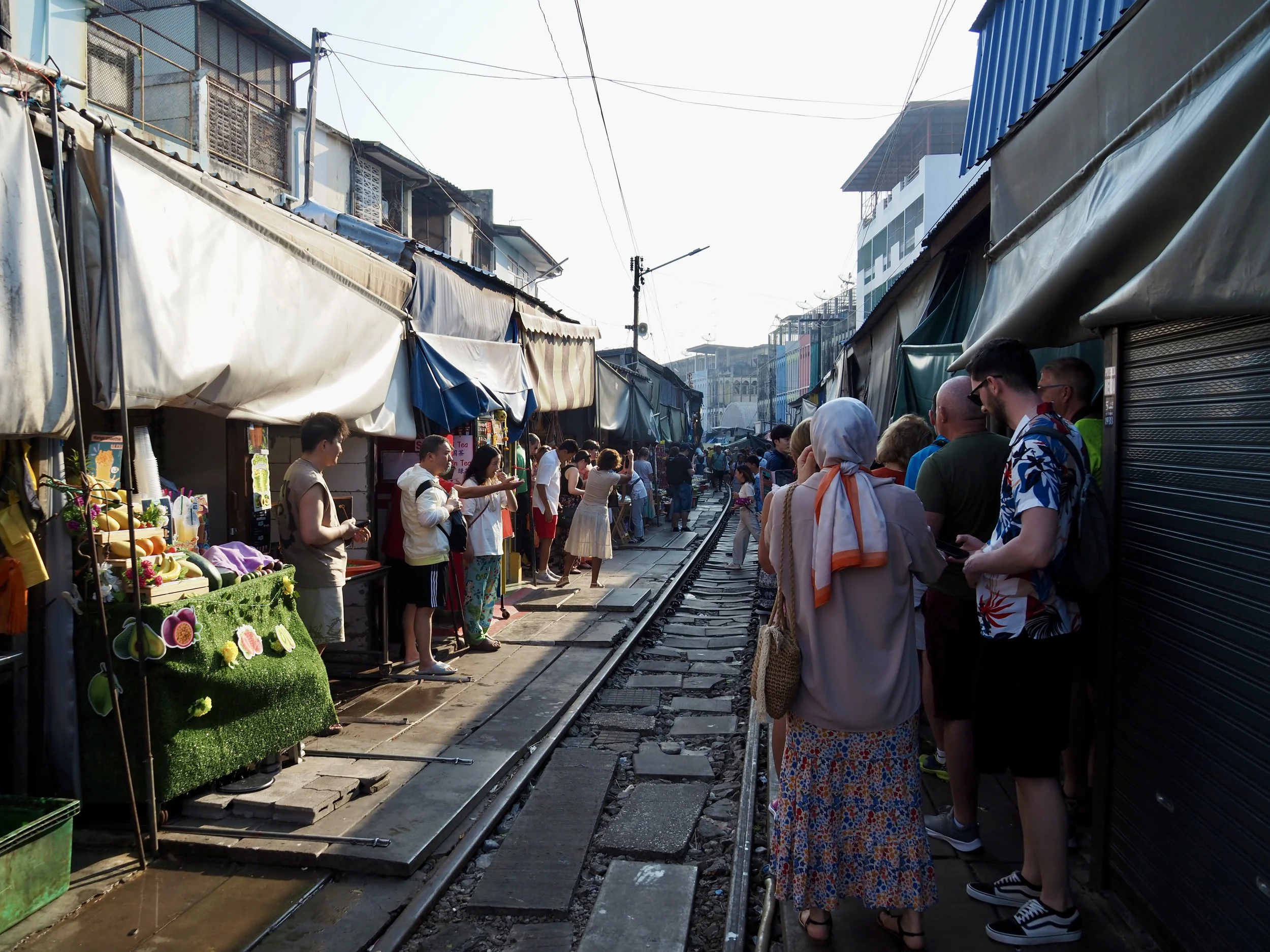
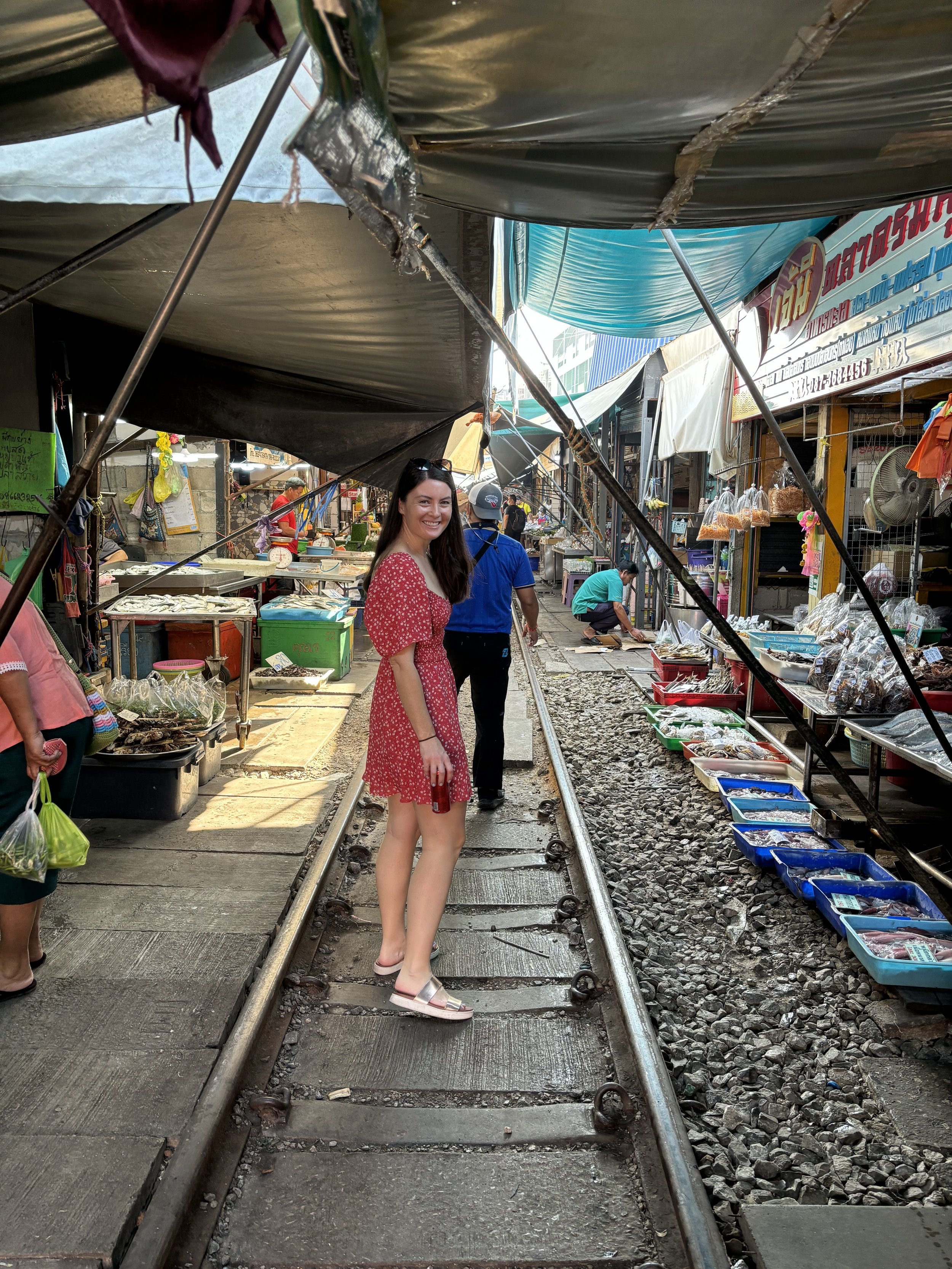
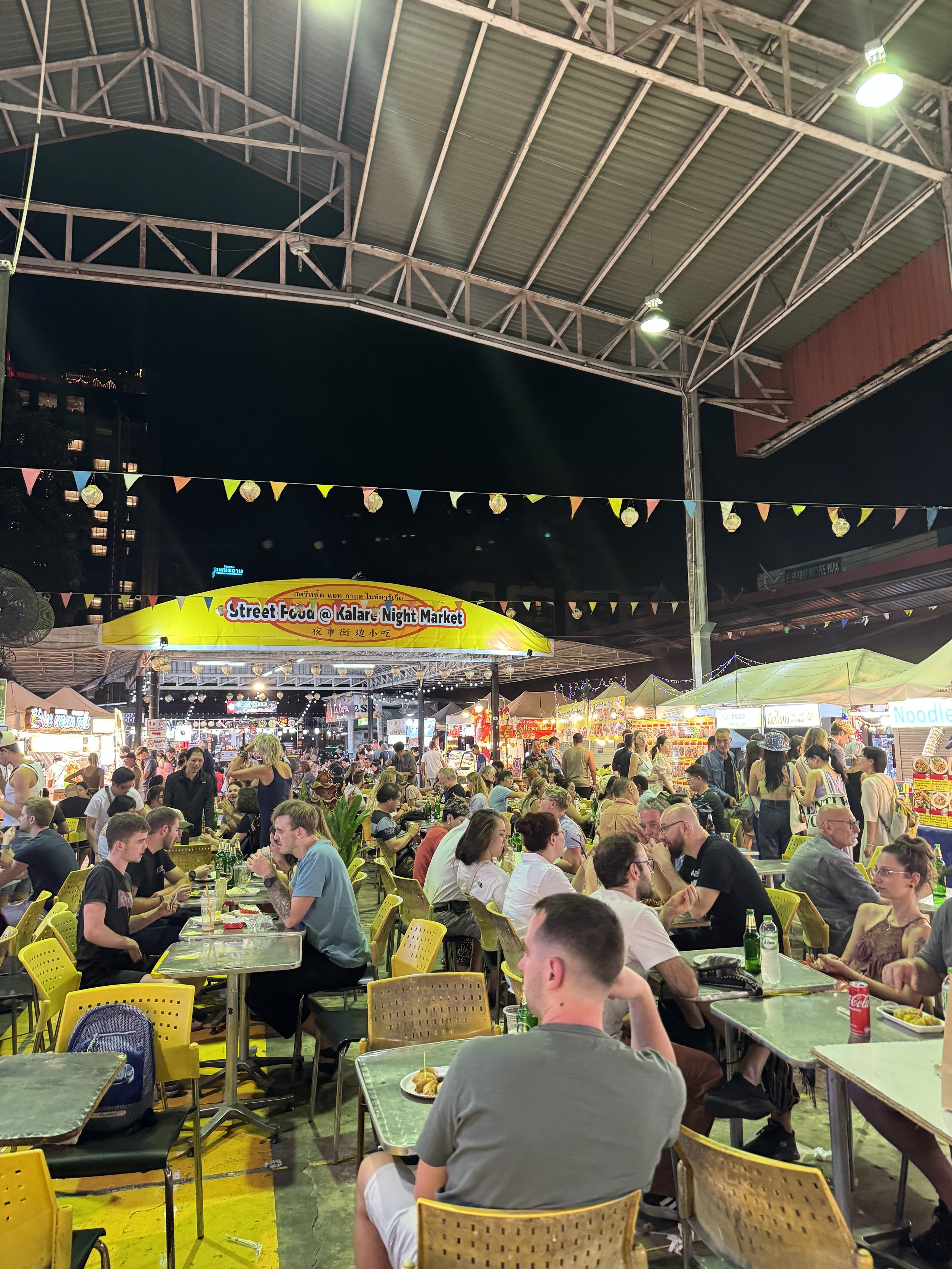
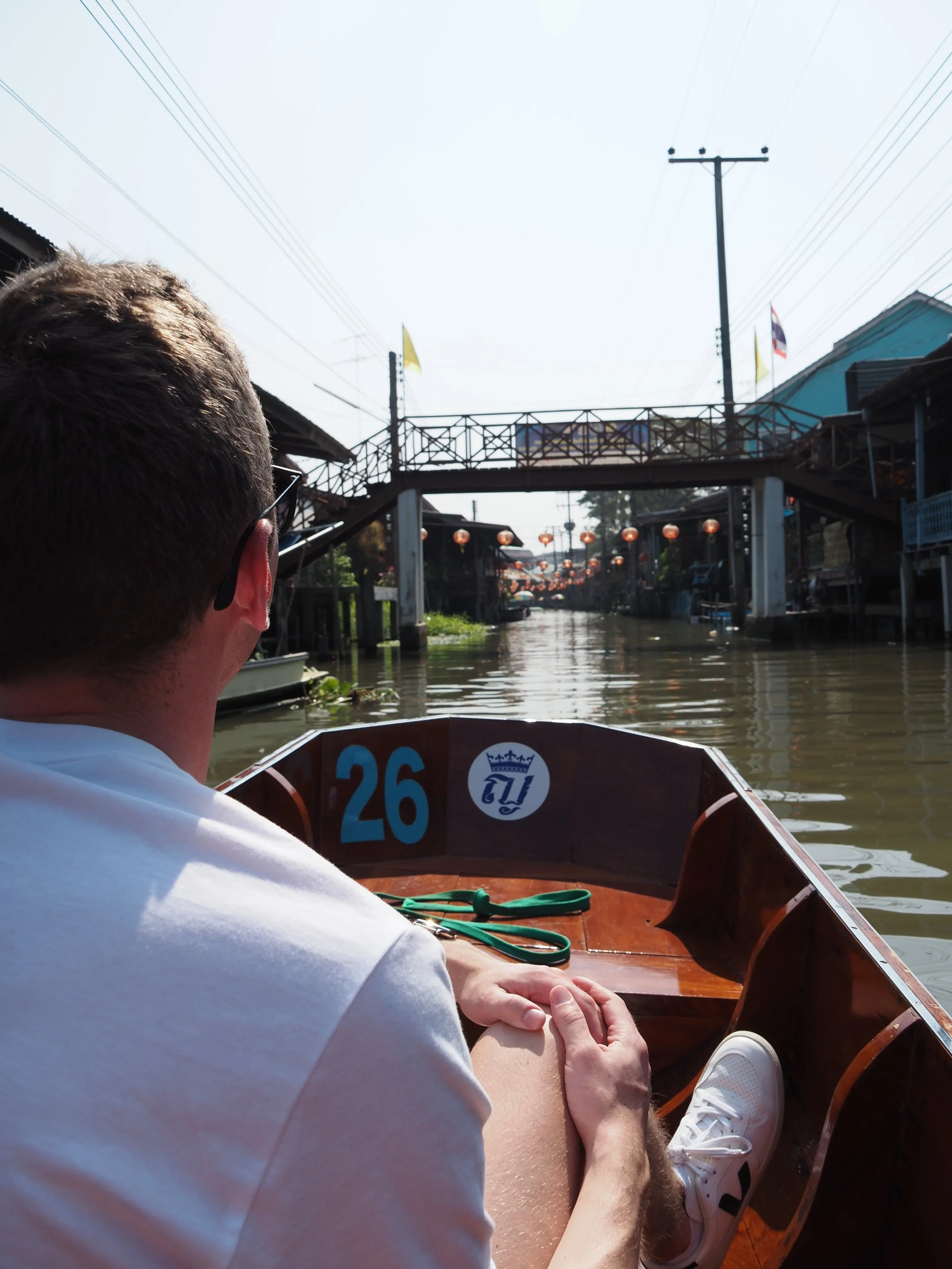
Thailand Highlight #3
Visit an elephant sanctuary in Chiang Mai
The northern Thai city of Chaing Mai is known as the epicenter of the backpacker community, but there’s plenty here for every type of traveler to enjoy. From cooking schools to mountaintop temples to the walkable historic center and surrounding elephant sanctuaries, there’s a reason why many travelers wish they’d allotted more time for this small city.
We booked a half-day excursion to the Elephant Nature Park, an elephant sanctuary that houses over 100 elephants that were rescued from abusive situations. We chose to visit a rehabilitation center with a history of rescuing abused and neglected animals, but keep in mind that not all elephant encounters in Chiang Mai follow these same ethical standards. You will not have the opportunity to touch or swim with the animals, but you will get up close to the animals—walking amongst dozens of elephants, learning the names and groupings from the expert guides, and keeping a safe distance as curious elephant calves run around tourists and lone buffalo meander across the property. The nature park also offers a full day tour and various experiences, some of which you will be able to walk with and feed the animals, though we felt like the half-day experience was sufficient to learn and thoroughly experience being up-close with the animals.
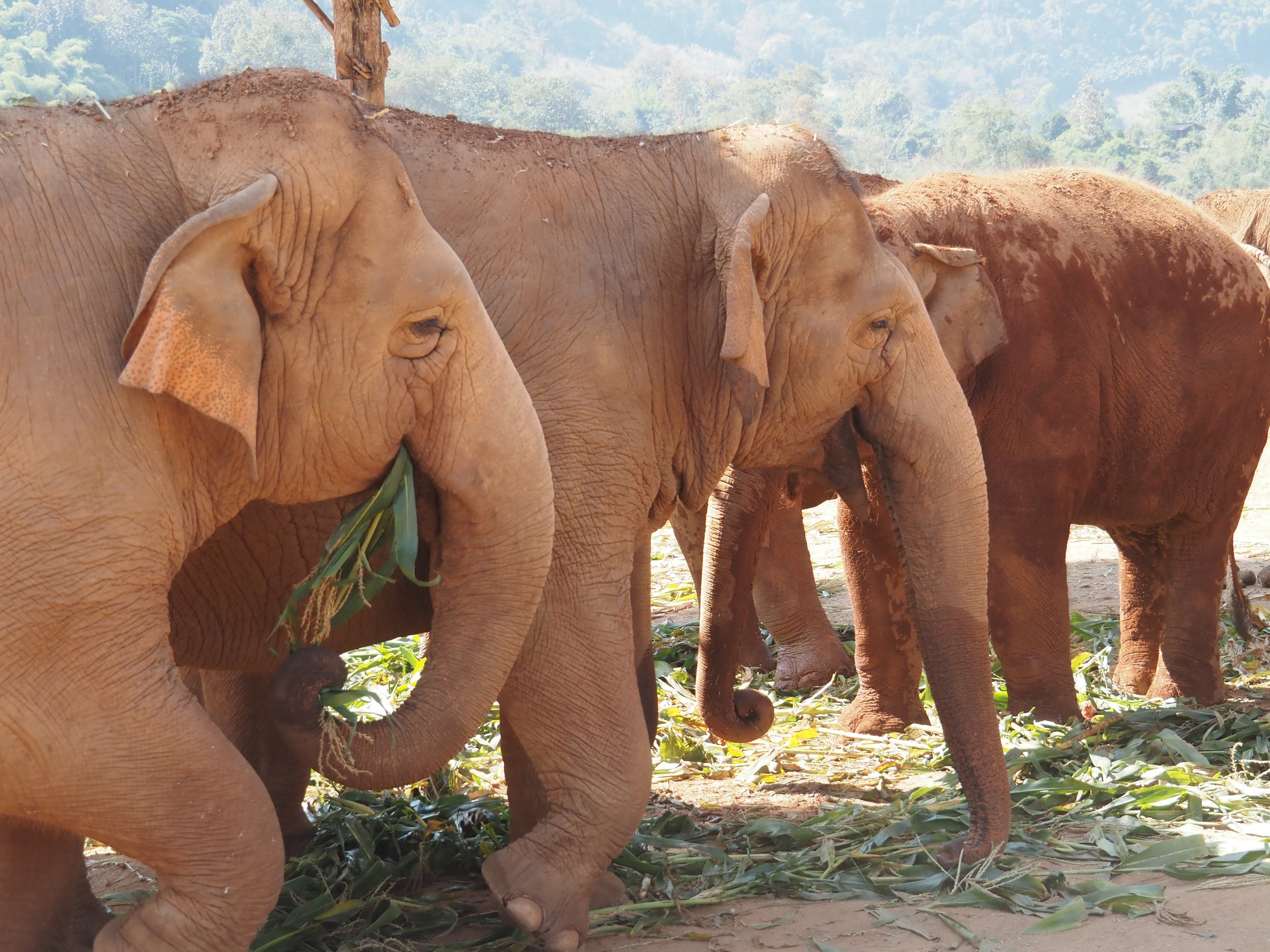
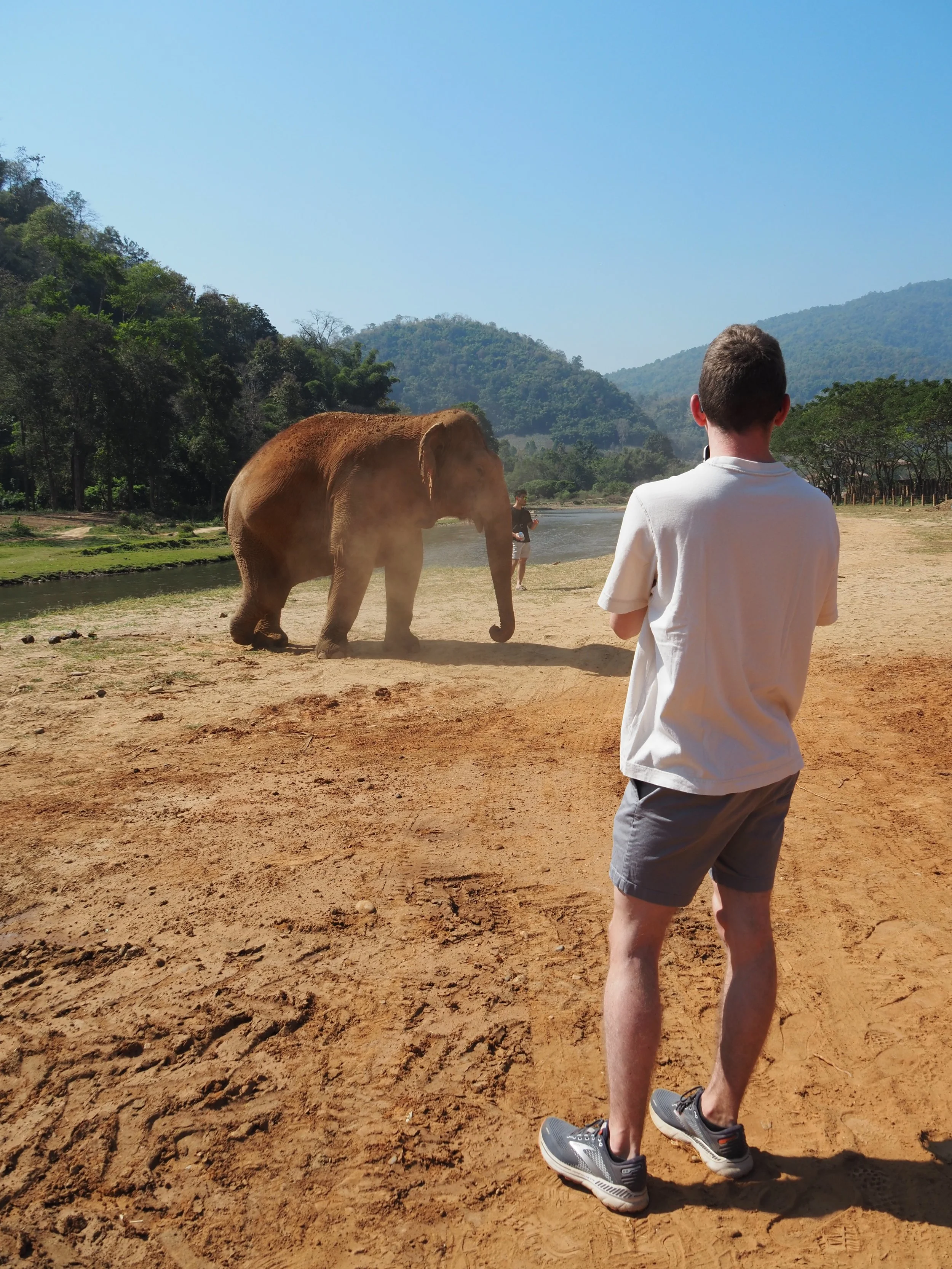
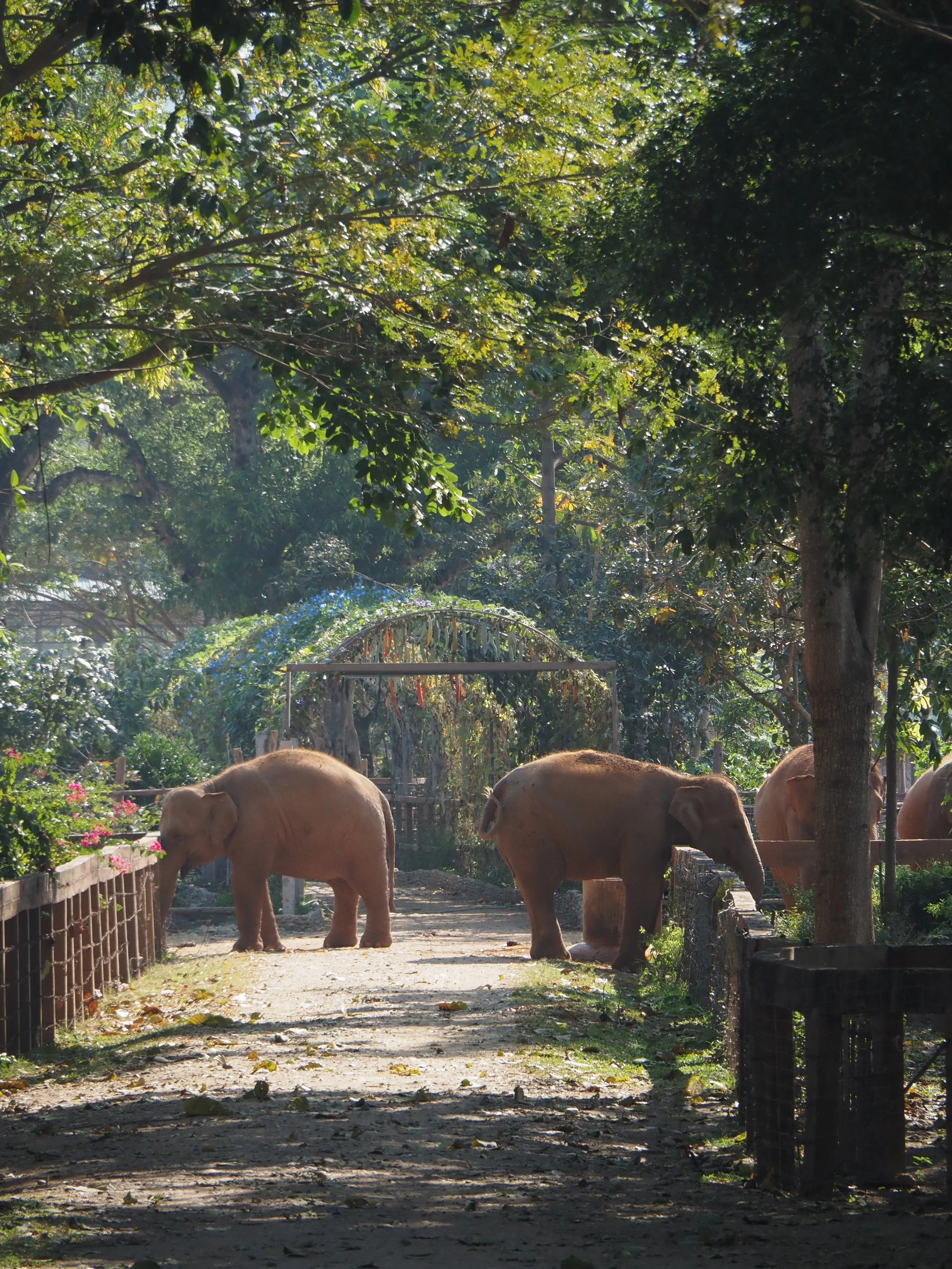
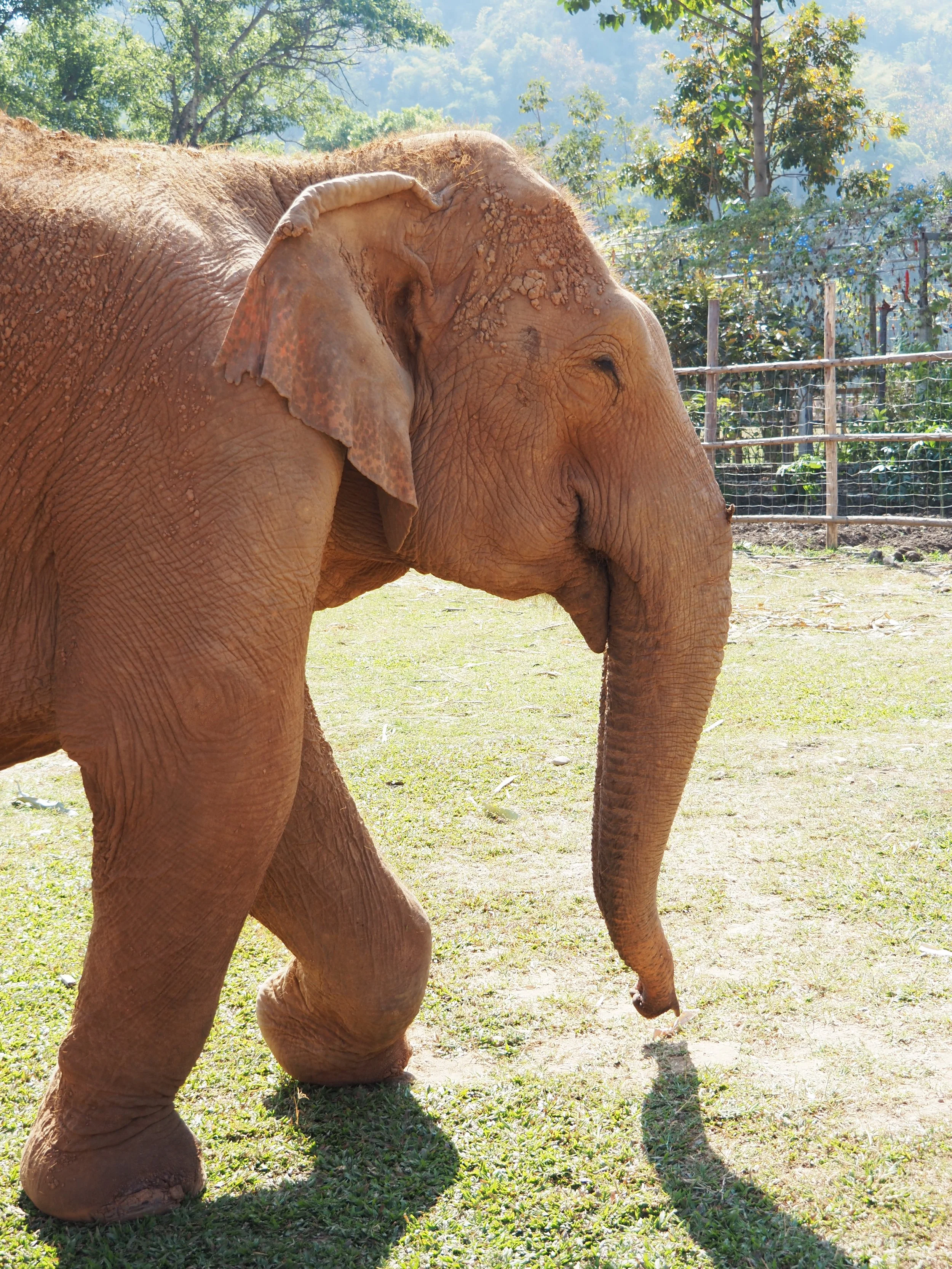
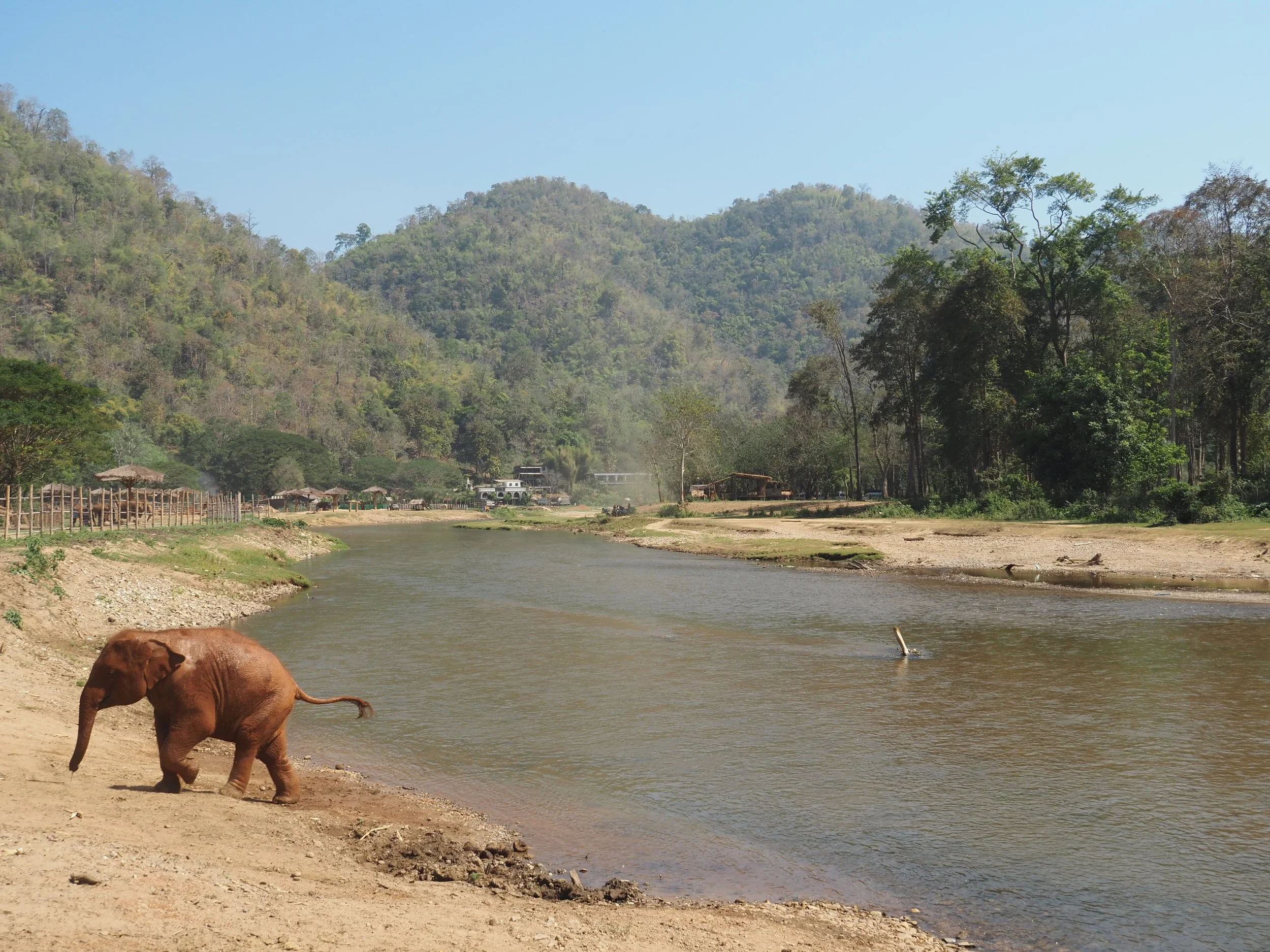
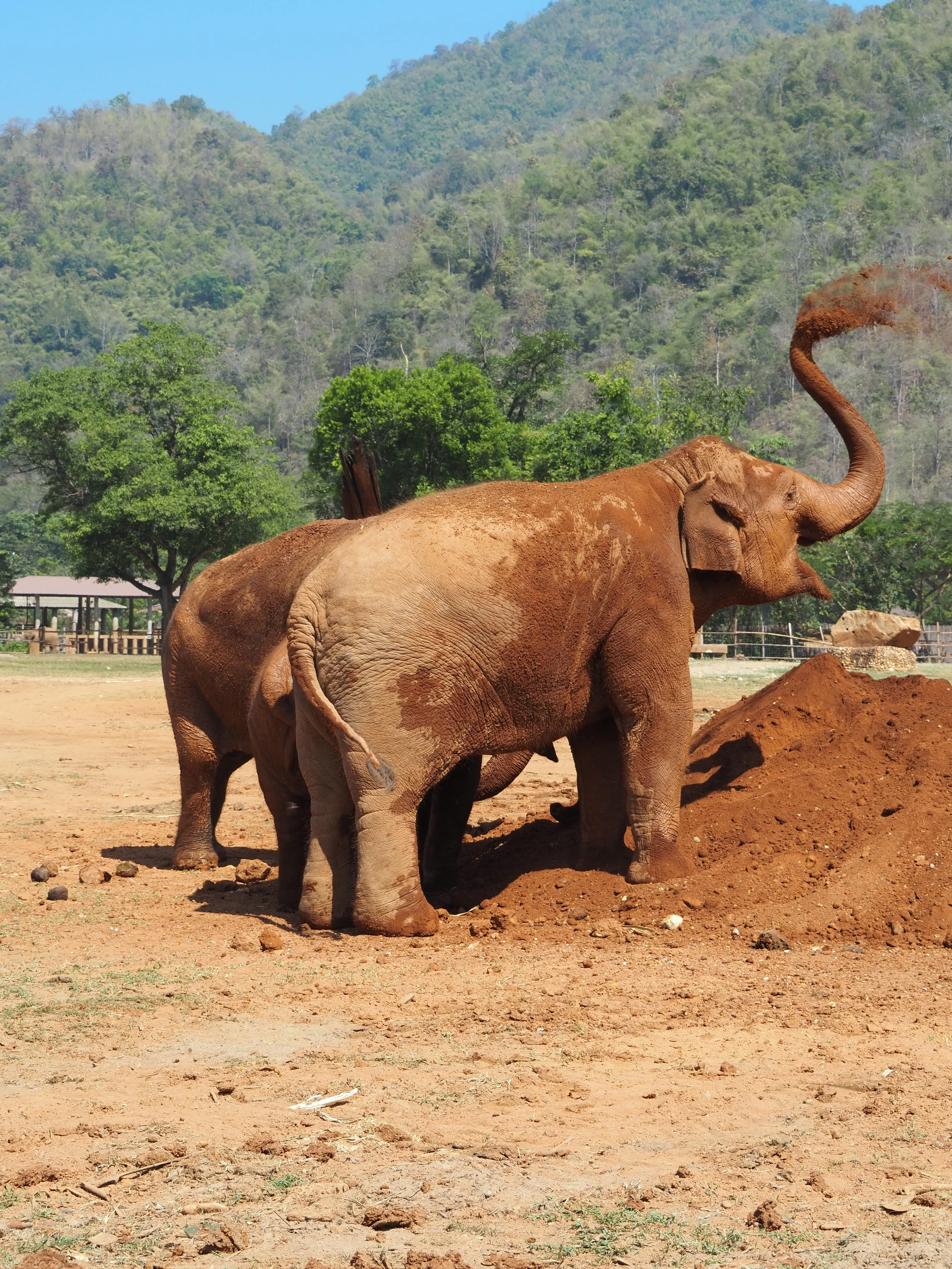
Restaurant Highlights
Coconut Shell (Chiang Mai)
This lowkey, open-air restaurant in the walled center of Chiang Mai came highly recommended by friends. It is truly no-frills, without sacrificing price or taste—our full meal, with sides and multiple beverages, came to an incredible $7. Try the khao soi, a traditional northern noodle dish, and a coconut shake for an authentic experience.
BKK Social Club (Bangkok)
One of the World’s Best Bars 2024, this opulent bar is located within the spectacular Four Seasons Hotel Bangkok at Chao Phraya River. It’s worth booking ahead to ensure a table, though we were able to secure a seat at the bar by arriving as it opened at 5 pm. The truffle fries and small bites were delicious, but the real star is the extensive, Argentinian-inspired cocktail menu. The bartenders are very knowledgeable and eager to chat, and our entire experience is what you would expect from a luxury five-star hotel.
Lae Lay Grill (Ao Nang)
This restaurant is set in the hills above the main strip of Ao Nang, but don’t let the location discourage you—the restaurant provides a songthaew to pick you up from your hotel and drop you off after your meal. The menu offers an elevated selection of Thai food, with the proximity to the sea offering a particularly strong seafood assortment. The open-air location overlooks the sea, providing incredible sunset views. From the plating and presentation to the attentive staff, we thoroughly enjoyed our dinner at Lae Lay Grill.
THE HOUSE by Ginger (Chiang Mai)
This is one of the most recommended restaurants in Chiang Mai, somewhere we heard our fellow travelers rave about time and time again. Located within the walled center, the restaurant occupies a space that was once a colonial mansion, the refined yet quirky décor is the first thing you’ll notice upon arrival. Our drinks were delicious and beautifully presented with fresh flowers, while the elevated Thai cuisine was also some of the best you’ll have in Chiang Mai. It’s worth booking a reservation in advance—we secured the last outdoor table as walk-ins, but the restaurant is generally booked solid. It is a wonderful experience, but comes at a (slightly higher) price—our meal, with multiple cocktails, came out around $65.
What to Know Before You Go
Moving between cities:
Bangkok, Chiang Mai, and Krabi are all a 1-2 hour flight away. There is a 10+ hour train between Bangkok and Chiang Mai, but the day-long journey will cut into your time at each destination.
Getting around each city:
Download the Grab app to order cars throughout Thailand. Bangkok is easily traversed by car or tuk-tuk, but be warned: Bangkok traffic is infamous for a reason. The subway offers an efficient alternative for certain routes but is not extensive. The city is split by the Chao Phraya river and ferries and longtail boats are a scenic way to explore the waterfront. Songthaews, converted pickup trucks with two rows of seats alongside the truck bed, are one of the most common ways to get around Chiang Mai. Order a car on Grab or walk outside—the central walled ancient city is also easily traversed by foot. The Krabi-Ao Nang area is best accessed by car, as the beaches are 45 minutes from the airport. Once in Ao Nang, songthaews are another common way to get around the beach strip, but you’ll likely spend the majority of your time on longtail boats or ferries as you explore the nearby beaches.
What to wear:
Despite the soaring temperatures, you’ll want to be mindful of the temple dress codes when packing for Thailand. Women are required to cover their shoulders and knees, and some temples, including the Grand Palace complex, also require men to wear full-length pants. There are plentiful vendors selling elephant pants or shawls on the streets if you need a last-minute addition. You’ll also need to remove your shoes multiple times as you enter and exit various temple buildings; while slip-on sandals are most convenient, the hot stone floors can be quite uncomfortable on bare feet.
What to eat:
Market culture is alive and well in Thailand—don’t miss out! From curries and noodle dishes to Thai tea and natural fruit juices, you’ll want to try a little of everything as you wander through. You’ll be amazed at the value for money, so there’s no reason not to try all the local cuisine.
The most famous northern Thai dish is khao soi, a curry noodle dish traditionally served with chicken. I also recommend taking a cooking class while in Thailand; we enjoyed this experience in Chiang Mai, where a cooking class is as commonplace as visiting an elephant sanctuary.
Durian is a notoriously smelly fruit you’ll find at many Thai markets. Be warned: many hotels threaten hefty fines if durian is brought back into rooms.
Where to stay:
The favorable conversion of American dollars to Thai baht makes even five-star accommodation accessible on a budget.
Bangkok: We chose to stay at Crowne Plaza Bangkok Lumpini Park, a beautiful hotel with immaculately clean rooms and an amazing breakfast buffet, though in retrospect, we would have chosen a location closer to the river to eliminate transportation times.
Chiang Mai: Choose accommodation within the historic center for walkable access to the major sites and restaurants. We stayed at Gord Nuea Boutique House, a very affordable motel-style guest house in a prime location.
Ao Nang: Options were limited when it came time to book our hotel in Ao Nang, as we began the process just three weeks before our visit. We opted for a budget-friendly hotel with close proximity to the water, and BlueSotel SMART Krabi Aonang Beach provided just that. This is not an option that I would necessarily recommend—the rooms were sterile and mostly clean, though nothing special. The proximity to the beach was the real advantage, though if we’d booked earlier, I would have chosen a true beach-front hotel. The hotel’s helpful staff and rooftop pool with ocean views were the true highlights.
Koh Samui: We made a last-minute decision to stay overnight on Koh Samui and were fortunate to find Anda Lanta Resort. This was a real bargain at $100, with a generous breakfast spread included, and a beautiful suite slightly set back from the water. Our fellow guests included a number of families with small children, though it never felt too crowded or noisy at the beach or the pool. The location is far south on the island, a 40-minute drive from the ferry port, though there’s little reason to leave this secluded paradise once you arrive. The resort offered a chauffeur service to nearby beaches, various excursions, and kayaks on their private beach. This is a great option for a family vacationers or those who want to stay in one location for a longer period of time, but if we return to Koh Samui, I would likely stay at a resort farther north for more accessibility to the island’s major beaches and restaurants.
When to visit:
There are plenty of reasons to visit Thailand and fluctuating temperatures across the country make it difficult to recommend a specific time to visit.
The dry season lasts between November and April, and this is when I (and a number of friends) chose to visit Thailand. We had beautiful weather throughout our mid-February trip, though temperatures reached over 90° F while we were in Bangkok and cooled comfortably in Chiang Mai and Krabi. Temperatures only increase the later you visit in the dry season, with April temperatures soaring into the 100s. The rainy season spans July until October, though the consistent rains bring fewer tourists.
